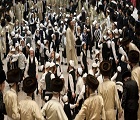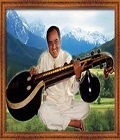Opinion Column
Artists as Art managers or Administrators
Art administrators, even at the best of times, area rare commodity. Should the administrator of an institution dedicated to the promotion of an art-form, be a strictly management man who empathises with the issues at play in the art world, or should he be an artist too, preferably from the top crust of art talent, so as to command the respect of the art community? Clearly, there can be no formula here to work as a guideline for decision-makers who have to choose the heads of art institutions. There have been as many cases of specialised administrators as of artists who have succeeded or failed in governing institutions. Some of the decisions in the capital lately on the choice of persons to head art institutions need to be looked at from several points of view, for they will have a far-reaching impact on the art scene.
Main Feature

Purush - Part II
In the long history of the Jews, dance played a major and significant role in their religious practices and observance. The prophets of the earlier Jewish period are known to have performed a type of ecstatic dance which took them to the heights of trance. In his trance-like state, the prophet became a mouthpiece for god, because the spirit of god entered into the prophet and became one with him. Harvest and religious festival dances like Sukkos (Feast of the the Tabernacle) and Shovous included ritual sacrifices. They were performed by men; women participated only as onlookers. Later in the 18th century, Hasidism led by Israel Baal Shem Tov had all the congregation dancing but the rabbi alone had the right to give solo performances. There is an interesting story from Hasidism about Baal Shem. One evening Baal Shem danced with his congregation, holding the scroll of Torah in his hands.
Special Feature

The veena is symbolic of the culture of India. It is an instrument which helps to project the ethos
of Indian classical music, yielding serene music in capable hands. However, accomplished veena players capable of sustaining the interest of the audience in concerts have been dwindling. In such a context, the demise of Chalapalli Chittibabu on 9 February, at the age of only 59, has created a void particularly difficult to fill. Chittibabu was born in a family of Carnatic musicians (see Siuti 73). His first guru-s were Pandaravada Upmakayya and his son Singaraju. He also learnt from Eyyuni Applacharyulu in Kakinada.


